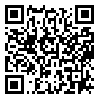BibTeX | RIS | EndNote | Medlars | ProCite | Reference Manager | RefWorks
Send citation to:
URL: http://jdm.tums.ac.ir/article-1-5561-en.html
2- Assistant Professor, Department of Pediatric Dentistry, School of Dentistry, Tehran University of Medical Sciences, Tehran, Iran
3- Associate Professor, Department of Community Oral Health, School of Dentistry, Tehran University of Medical Sciences, Tehran, Iran
4- Dentist
Background and Aims: One of the most effective methods in reducing the prevalence of caries is oral health education. The aim of this study was to evaluate of two educational interventions regarding prevention of early childhood caries on self-reported practice of parents of 2-5-year-old children receiving dental treatment under general anesthesia.
Materials and Methods: In this interventional study, the effects of two different educational interventions
(pamphlet and pamphlet along with reminder) on self-reported practice of parents of 2-5-years-old children receiving dental treatment under general anesthesia was assessed. Thirty seven couples of children and mothers in two groups were randomly selected. Before and three months after interventions, a standard questionnaire regarding self-reported practice of mothers on prevention of early childhood caries was completed by respondents. Moreover, oral examination including Simplified oral hygiene index (S-OHI), dmft, and white spot lesions were rerecorded at the beginning and three months after interventions. At this time in one of the groups reminder phone calls were made every month. Finally, the answers were scored and data were statistically analyzed to be compared in pre- and post-test.
Results: Comparing each of the groups before and after interventions showed that in both groups there were significant differences in mothers’ perception of perceived ability to make child brush his teeth twice a day (P=0.001), and child’s tooth brushing frequency more than once a day (P=0.03). S-OHI had no significant difference after the intervention between two groups. But each group had a significant decrease three months after intervention (P=0.003). Also the mean number of white spots showed a significant decrease before and after intervention in each groups. Regarding mothers’ self-reported practice no significant difference was observed between two groups (P>0.05).
Conclusion: Using pamphlets along with or without reminder as educational measures had similar enhancing effects on the mothers’ self-reported practice on oral health of children within three months.
Received: 2017/01/29 | Accepted: 2017/01/29 | Published: 2017/01/29
| Rights and Permissions | |
 |
This work is licensed under a Creative Commons Attribution-NonCommercial 4.0 International License. |




